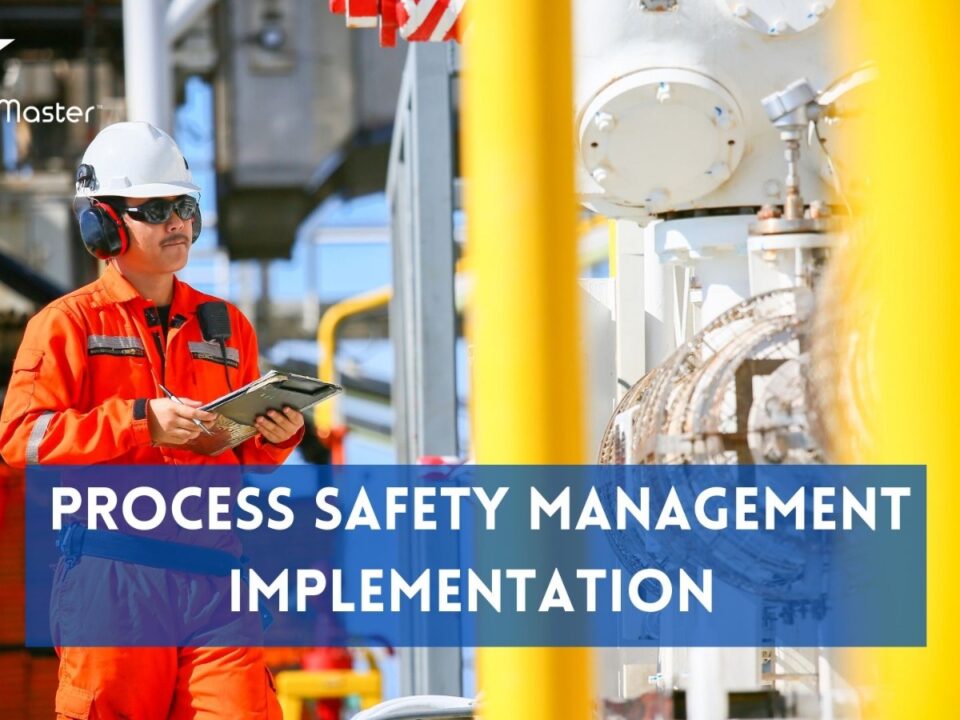Understanding Safety Integrity Level Assessment: Ensuring Faultless Industrial Safety

5 Steps to Developing an Effective Workplace Safety Program
July 15, 2023
From Spark to Blaze: Unraveling the Science Behind Electrostatic Fires and Explosions
July 17, 2023Understanding Safety Integrity Level Assessment: Ensuring Faultless Industrial Safety
In today’s fast-paced industrial landscape, ensuring the utmost safety for workers and protecting valuable assets is of paramount importance. The concept of Safety Integrity Level (SIL) emerged as a comprehensive framework to achieve faultless safety measures, assuring that potential risks are mitigated and controlled effectively. SIL acts as a guiding light for industries, providing them with a structured approach towards implementing safety systems that operate at the highest level of reliability.
At its core, SIL represents a measure of the effectiveness of a safety system in preventing or mitigating hazardous events. It quantifies the level of risk reduction achieved by implementing safety measures, allowing companies to systematically assess potential hazards and implement appropriate controls. By understanding and adhering to SIL requirements, organizations can instill confidence in their workforce and stakeholders by demonstrating their commitment to maintaining an environment where safety takes precedence above all else.
Industrial safety is a matter of paramount importance in today’s world. With numerous hazardous processes and complex machinery involved, ensuring the well-being of workers and the general public is crucial. However, accidents and incidents continue to occur, necessitating a deeper understanding of safety measures. One concept that has gained prominence in recent years is Safety Integrity Level (SIL). In this article, we will explore the intricacies of SIL and its significance in maintaining faultless industrial safety.
Throughout history, countless tragedies have served as reminders of the devastating consequences when safety protocols are not followed. From major industrial accidents to catastrophic failures, the cost of neglecting safety measures can be immense. Understanding Safety Integrity Level provides a framework that enables companies to systematically identify and mitigate risks associated with their operations.
The Importance of Industrial Safety with Safety Consultant or Best Process Safety Consultant
When it comes to industrial processes and operations, the significance of safety cannot be overstated. The well-being of workers, the protection of assets, and the prevention of accidents all hinge on maintaining a robust culture of industrial safety. It is not merely a legal obligation but a moral responsibility to ensure that every employee returns home unharmed at the end of each workday.
Industrial safety goes beyond safeguarding human lives; it also encompasses the preservation of infrastructure, reduction in downtime, and minimization of financial losses resulting from accidents. By prioritizing safety in every aspect of industrial practices, organizations can create an atmosphere where employees feel secure and valued, leading to increased productivity and morale. Moreover, prioritizing safety fosters trust between management and workers, creating a positive work environment that attracts talented individuals.
What is Safety Integrity Level SIL
When it comes to ensuring faultless industrial safety, one term that plays a pivotal role is Safety Integrity Level (SIL). SIL is a measurement of the reliability of safety functions within a system. It quantifies the probability of failure on demand and provides guidance for selecting and implementing safety measures in industries where risks are high.
SIL represents a proactive approach towards minimizing hazards and reducing the possibility of accidents. It considers factors such as hardware reliability, systematic failures, human error, and environmental conditions to determine the level of risk reduction required for a particular application. By assigning SIL levels to safety systems, companies can establish clear targets for mitigating risks, enabling them to make informed decisions about appropriate safety measures.
The Story Behind SIL: From Past Failures to Enhanced Safety
Behind every significant development in industrial safety lies a history of lessons learned from past failures. The concept of Safety Integrity Level (SIL) is no exception. In the early days of industrialization, accidents were distressingly common, resulting in loss of life, injuries, and devastating damage to infrastructure. These catastrophic events served as catalysts for change, igniting a collective recognition of the need for systematic approaches to ensure safety.
It was through these tragic experiences that the notion of SIL emerged as a pivotal framework for enhancing safety measures. Engineers and experts from various industries joined forces to establish standardized guidelines aimed at reducing risks associated with hazardous operations. By analyzing past incidents and dissecting their causes meticulously, they laid the foundation for SIL, seeking not only to prevent similar disasters but also to inspire confidence in the future.
The Basis of SIL: Key Concepts and Definitions
When it comes to achieving faultless industrial safety, comprehending the fundamental concepts and definitions of Safety Integrity Level (SIL) is crucial. SIL is a quantitative measure that assesses the reliability of safety systems in order to prevent or mitigate hazards within industrial processes. It provides a standardized framework for evaluating risk and ensuring that appropriate safety measures are implemented.
At its core, SIL encompasses three key components: Probability of Failure on Demand (PFD), Risk Reduction Factor (RRF), and Target Safety Integrity Level (SIL). PFD represents the likelihood of a safety system failing to perform its intended function when a dangerous condition arises. RRF quantifies the effectiveness of a safety system in reducing risk, while SIL defines the desired level of risk reduction required for a specific process. By understanding these concepts, industries can proactively develop robust safety strategies that go beyond compliance, ensuring optimal protection for their workforce.
Identifying and Assessing Safety Risks: A Step-by-Step Guide
When it comes to ensuring faultless industrial safety, the first crucial step is identifying and assessing potential risks. This process requires meticulous attention to detail and a comprehensive understanding of the specific industry’s operational landscape. By following this step-by-step guide, organizations can systematically identify potential hazards, evaluate their severity, and ultimately implement effective risk mitigation measures.
The initial phase involves conducting a thorough site survey to gather information about the infrastructure, systems, and processes in place. This includes examining equipment specifications, operational procedures, maintenance records, historical incident reports, and relevant industry guidelines. By assembling this wealth of data, a comprehensive picture of the existing safety framework emerges.
Next, an interdisciplinary team should be formed to analyze the gathered information comprehensively. This team should include engineers with expertise in various fields such as electrical systems, mechanical components, process control mechanisms, and human factors engineering. By leveraging their collective knowledge and experience, they can effectively identify potential hazards that could compromise safety integrity.
The identified risks should then be evaluated based on their severity levels by utilizing internationally recognized risk assessment methodologies. These methodologies take into account various factors such as likelihood of occurrence (probability), potential consequences (severity), and exposure time to determine the level of risk associated with each hazard.
An optimistic approach is key during this process as it allows organizations to proactively address safety concerns before they escalate into potentially catastrophic incidents. By diligently following this step-by-step guide for identifying and assessing safety risks in an industrial setting organizations can create a solid foundation for implementing robust safety measures that protect both human lives and valuable assets.
Implementing SIL: Best Practices and Strategies for Success
Implementing Safety Integrity Level (SIL) is a critical process that requires meticulous planning, careful execution, and continuous evaluation. To ensure faultless industrial safety, organizations must adopt best practices and strategies that address all aspects of SIL implementation. Firstly, a thorough understanding of the specific safety requirements for each application is paramount.
The first step towards successful implementation is the identification and analysis of potential hazards. This involves conducting a detailed hazard study to assess the severity and likelihood of various risks. Once these hazards are identified, appropriate risk reduction measures should be implemented by selecting suitable safety instrumented systems (SIS) that meet the required SIL level. These systems should be carefully designed, installed, operated, and maintained in accordance with industry standards and guidelines.
Furthermore, effective management of change plays a crucial role in maintaining SIL compliance over time. Organizations must have robust procedures in place to manage modifications or updates to processes or systems that may impact safety integrity levels. Regular audits and assessments should also be conducted to verify the effectiveness of implemented measures and identify areas for improvement.
In conclusion, implementing SIL successfully requires comprehensive planning and adherence to best practices throughout the entire lifecycle of industrial operations. By prioritizing hazard identification, appropriate risk reduction measures, meticulous system design, rigorous maintenance practices, effective change management procedures, and continuous evaluation; organizations can ensure faultless industrial safety while bolstering their reputation as leaders in their respective industries.
SIL Verification and Validation: Ensuring Reliable Safety Measures
Verification and validation are integral steps in the process of ensuring safety integrity level (SIL) compliance within industrial systems. These two distinct yet interconnected activities play a crucial role in confirming that the implemented safety measures meet the required standards and effectively mitigate potential hazards. While verification focuses on assessing whether the safety functions have been designed and implemented correctly, validation goes a step further by evaluating if these functions effectively address the identified risks in real-world scenarios.
During the verification phase, various techniques such as reviews, inspections, and simulations are employed to rigorously scrutinize every aspect of the safety measures. This exhaustive analysis aims to ensure that all components, from sensors to logic solvers to final elements, operate within defined parameters and perform their intended functions reliably. Through this meticulous process, any potential design flaws or inconsistencies are identified and rectified early on, reducing the likelihood of accidents or system failures.
Case Studies: Real-Life Examples of Successful SIL Implementation
In the realm of industrial safety, success stories serve as guiding beacons, illuminating the path toward faultless operations. Several notable case studies highlight the successful implementation of Safety Integrity Level (SIL) in various industries, underscoring its efficacy in ensuring impeccable safety standards.
One such example comes from the petrochemical sector where a major refinery successfully integrated SIL into their safety systems. By meticulously identifying potential hazards and carefully assigning SIL ratings to each safety function, they were able to develop robust safeguards against operational risks. Through diligent adherence to international standards and continuous monitoring and maintenance, this refinery achieved not only enhanced safety but also remarkable cost savings due to reduced incidents and shutdowns. This success story is a testament to how SIL can effectively mitigate risks while simultaneously optimizing operational efficiency.
The Benefits of Achieving and Maintaining SIL Compliance
When it comes to ensuring faultless industrial safety, achieving and maintaining Safety Integrity Level (SIL) compliance brings forth a multitude of significant benefits. Firstly, SIL compliance provides peace of mind to both workers and management, knowing that robust safety measures are in place. This fosters a positive work environment where employees can focus on their tasks without constant worry or fear of accidents or hazards.
In addition to the improved sense of security, SIL compliance also leads to enhanced operational efficiency. By identifying and mitigating potential risks through the systematic approach provided by SIL, organizations can prevent costly accidents, breakdowns, or downtime. This not only saves valuable resources but also optimizes production output and maximizes profitability.




